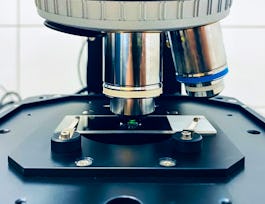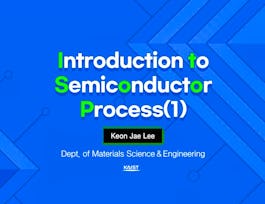This course can also be taken for academic credit as ECEA 5606, part of CU Boulder’s Master of Science in Electrical Engineering degree.



Nanophotonics and Detectors
This course is part of Active Optical Devices Specialization

Instructor: Juliet Gopinath
Sponsored by Syrian Youth Assembly
5,926 already enrolled
(22 reviews)
What you'll learn
Use nanophotonic effects (low dimensional structures) to engineer lasers
Apply low dimensional structures to photonic device design
Select and design optical detector for given system and application
Details to know

Add to your LinkedIn profile
12 assignments
See how employees at top companies are mastering in-demand skills

Build your subject-matter expertise
- Learn new concepts from industry experts
- Gain a foundational understanding of a subject or tool
- Develop job-relevant skills with hands-on projects
- Earn a shareable career certificate


Earn a career certificate
Add this credential to your LinkedIn profile, resume, or CV
Share it on social media and in your performance review

There are 6 modules in this course
The course covers the basics of nanophotonic light emitting devices and optical detectors, including metal semiconductor, metal semiconductor insulator, and pn junctions, photoconductors, avalanche photodiodes and photomultiplier tubes. Low dimensional structures enable an entirely new class of devices. Join me on a journey to understand how this happens and explore powerful examples of successful technologies such as the quantum cascade laser.Module 1 will cover the quantum cascade laser, a laser design based on intersub-band transitions, that enables very long wavelength lasers. It will also talk about lasers that operate on intraband transitions, using low dimensional structures, which enable further control over carrier concentrations.
What's included
6 videos3 readings2 assignments1 discussion prompt
In this unit, we will learn how to confine photons just as we do with electrons. This gives us power over the allowed modes of emission, allowing us to enhance the performance of lasers as well as develop 'threshold-less' lasers. I hope you enjoy this exciting topic as much as I do.
What's included
8 videos2 readings2 assignments
In this module, you will learn about the basics of detection and the key performance metrics that are used to evaluate detectors including noise equivalent power and detectivity. This lays the building blocks for fundamental understanding, design, and use of different photonic detection technology. This is core information that should be in the wheelhouse of any photonics researcher or engineer.
What's included
5 videos2 readings2 assignments
In this unit, you will learn about the fundamentals of how metal insulator semiconductor devices operate, their advantages and challenges they face. This information is particularly useful for understanding the operation of charge-coupled devices, discussed in the next section.
What's included
10 videos2 readings2 assignments
In this module, you will learn about two powerful detection technologies: charge coupled devices (CCDs) based on metal insulator semiconductor structures and photoconductors. These technologies are very useful for photonic systems.
What's included
5 videos2 readings2 assignments
In this module, you will learn about another very important detector technology: p-n junctions. These junctions can be used to be photodiodes as well as avalanche photodiodes. We will learn these important technologies function, with applications ranging from microscopy to light detection and ranging (LIDAR).
What's included
12 videos2 readings2 assignments
Instructor

Offered by
Why people choose Coursera for their career




Learner reviews
22 reviews
- 5 stars
45.45%
- 4 stars
36.36%
- 3 stars
9.09%
- 2 stars
4.54%
- 1 star
4.54%
Showing 3 of 22
Reviewed on May 6, 2020
Content is really good. Quality of assignments are also very nice. Only one problem is framing of questions is not done properly.
Recommended if you're interested in Physical Science and Engineering

Arizona State University

Korea Advanced Institute of Science and Technology(KAIST)

Open new doors with Coursera Plus
Unlimited access to 10,000+ world-class courses, hands-on projects, and job-ready certificate programs - all included in your subscription
Advance your career with an online degree
Earn a degree from world-class universities - 100% online
Join over 3,400 global companies that choose Coursera for Business
Upskill your employees to excel in the digital economy




